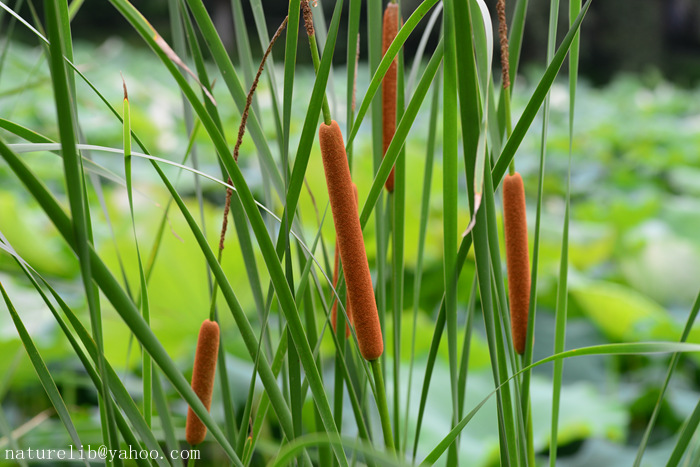- Scientific Name: Typha orientalis C.Presl
- Ref: Epimel. Bot.:239. 1851
- Synonyms:
- Typha angustifolia subsp. muelleri (Rohrb.) Graebn.
- T. japonica Miq.
- T. muelleri Rohrb.
- T. shuttleworthii Lehm.
- English Common Name: bulrush, bullrush
- Chinese Common Name: 香蒲 xiāngpú, 东方香蒲 dōngfāng xiāngpú
- Japanese Common Name: コガマ [小蒲] kogama
- Family: Typhaceae
- Genus: Typha
- Distribution: Lakes, ponds, channels, swamps, slow-moving rivers. Anhui, Guangdong, Guizhou, Hebei, Heilongjiang, Henan, Hubei, Jiangsu, Jiangxi, Jilin, Liaoning, Nei Mongol, Shaanxi, Shandong, Shanxi, Taiwan, Yunnan, Zhejiang [Japan, Korea, Mongolia, Myanmar, Philippines, Russia; Australia].
- Photo: 06/18/2016, Zhejiang
Stems 1.3-2 m tall, stout. Leaves 40-70 cm × 4-9 mm, abaxially convex, transverse section semicircular. Male part of spikes 2.7-9 cm, with 1-3 deciduous bracts at base or occasionally in middle portion; female part of spikes not separated from male part, 4.5-15 cm, with 1 deciduous bract at base. Male flowers: stamens 3, rarely 2 or 4; anthers ca. 3 mm. Female flowers without bracteoles; ovary fusiform to lanceolate; stalk ca. 2.5 mm, slender; styles 1.2-2 mm; stigmas spatulate, 0.5-0.8 mm; hairs on stalk ca. as long as style. Fruit elliptic. Fl. and fr. May-Aug. 2n = 60. (Flora of China)
